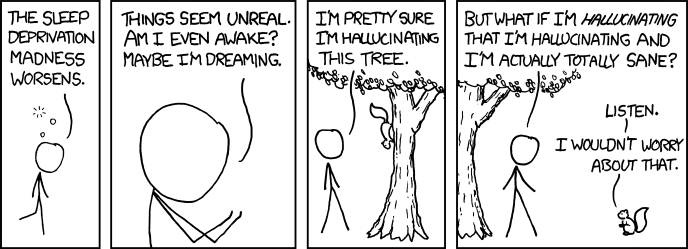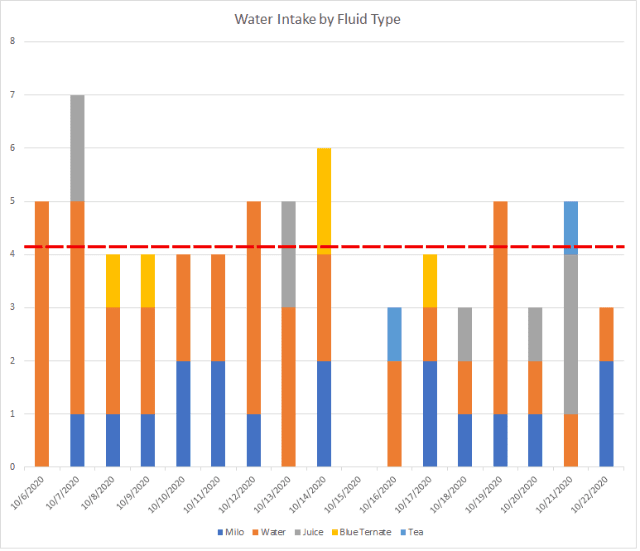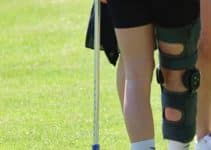How to get rid of insomnia? I use these words to search for a remedy to my sleep problem, which hounded me for a long time until I discovered some essential things to consider in resolving the issue. Having read, gathered, and tested sleep tips online, I finally was able to get a better sleep routine by gradually changing my habit.
The tips I applied may have worked synergistically, not exclusively through using a single approach, as I used to think, and many believe it should.
Based on scientific findings, CNBC reports that there’s no one-size-fits-all diet approach to food. It should be tailored to the person trying to lose weight as each one has a unique composition of microbiota in their gut. Simply put, your digestive process is different from anybody else.
The approach to lack of sleep, I propose, is similar to the process of losing weight. What works for one person may not work for everyone.
I wrote this article to share the many tips I compiled and applied over the years. Some work, albeit unpredictably, for some reason. I highlight the recent ones, as the first three approaches appeared to be the best tips, my holy grail so far, to get rid of insomnia.
Just choose and experiment on what will work for you. The causes of insomnia are varied, and no single solution fits all.
But first, take time to find out the root cause of your insomnia. I discuss mine.
Delving Into the Root Cause of Insomnia
I tried to delve into the root cause of my insomnia that plagued me for a long time. I can no longer remember how long this sleep difficulty affected me. Occasionally, I get a good sleep and have dreams. But I could not sustain it and get enough rest.
There were times I would find myself gasping for air while sleeping, and I can’t help but force myself to move and shout in the night, fearing I would wake up no more. It took years to develop, and it would take years to undo.
Every time I could not sleep, I usually keep on writing whatever’s in my mind. It’s my refuge.
Perhaps those things in my mind keep prodding me to unleash them. Unless I release them, they keep on floating in my head and boggles me until I act on them. That somehow is a productive way to work on this problem as I produced several books and wrote hundreds of articles in the process.
To solve a problem, find the cause. That’s a sensible approach to problems, so I reflected on the possible causes of my insomnia.

Sleep Routine in the Past
I suspect my insomnia may have something to do with my past experiences, which became ingrained in me and remained like a habit. I used to wake up in the middle or at an unpredictable hour of the night whenever I hear the sudden bouts of my wife’s involuntary cough that wakes me up.
It’s a dilemma as I could not stop her from something which she could not control. She had thyroid cancer, and the only remedy to keep her breathing was to keep her trachea open using a tracheostomy tube.
The cancer had paralyzed her vocal chord that usually opens to allow air to pass. She had to cough as the air she breathes comes directly through the tube. The air she breathes is dry because her nose and throat could no longer moisten it before it gets to her lungs. Her suffering took 25 years.
So I get to work many times, floating like a log and drowsily reeling from lack of sleep. Eventually, I had a severe nose bleeding case in the early part of December 2011 that doctors could not explain.
I was airlifted and confined in the hospital for three weeks without a precise diagnosis of what caused it. I can only sense guesswork from the attending physician as he could not tell me the root cause of the problem.
Upon returning home, I tried to convince my wife that I should sleep in a separate room if she wants me to get some rest. I explained my difficulty was getting to sleep, and I am looking for a solution. I am desperate to get rid of my insomnia.
It took her a while to understand my predicament as she needs the comfort of me sleeping by her side. In the latter part of our ordeal, she finally allowed me to sleep in another room. It may be a sad state, but necessary.
It had just been three years since she left and I try to get back to normal as possible. Recovery takes time. Ingrained behavior is difficult to change unless with fierce resolve.
It takes time and effort for habits to change (Gardner et al., 2012). According to Lally et al. (2010), it takes 18 to 254 days to change a habit.
While I suspect that this may be the root cause, it is not the only one. I will focus on habit change as the foremost tip, as this appears to be one of the major culprits of my lack of sleep.
Sleep Monitoring
Before any intervention to eliminate insomnia takes place, it would help if you and the doctor or specialist see how the sleep problem manifests. Sleep monitoring aids in troubleshooting the cause of the problem.
I recounted my worst sleep pattern four months ago. I wrote in my sleep diary the following:
Slept at 8:00 pm, woke at 10:00 pm, slept, then woke at 1:30 am, cannot sleep, tried again at 2:47 am, woke at 5:41 am.
That’s the worst sleep pattern I’ve had last June 20 this year. On average, I woke up every 3 am, getting only 3 to 4 hours of sleep.
10 Creative Ways to Get Rid of Insomnia
Here are the ten things I did, and I highlight the first three approaches to getting rid of insomnia. Finally, these three science-backed methods allowed me to get at least seven hours of sleep every night since I applied them.
The other approaches worked but only for a while. The solution appears to be in the first three approaches. I just listed the others recommended by health professionals, i.e., if the three methods worked for me would not work for you.
Again, I emphasize that what works for me may not work for you. Find the root cause of your problem first. If it’s the noise you hear each night that disturbs you, then, by all means, get rid of that noise. In a peaceful way, of course.
1. Change Habit: Drink Enough Water
I listed the water I drink every day for almost three weeks. I plotted 17 points on a graph to see my water intake trend, including all other beverages I take like an energy drink (Milo), instant juice, blue ternate extract, and tea. I drink blue ternate because a friend says it relaxes your body and aids sleep.
Here’s how my fluid intake looks after plotting the data in Excel.

Notice that as time goes by, my water intake (orange) dwindles. I get a minimum of three mugs per day. I drink more of the other fluids. I tend to forget to drink water even if I am conscious that I need to take it. That’s despite me seeing my fluid intake on the whiteboard just beside me as I work online.
I drink an average of 4.1 mugs containing a fluid of 350 ml. That’s 1.43 liters, barely 50% short of the recommended 2.7 liters for males.
Notice that I forget to drink enough water consistently. I realized that my effort to drink water diminished through time. I tend to focus on my activities and forget to drink the required fluids my body needs.
I lack water, and this would have contributed to my lack of sleep. My wife used to remind me always to drink water. And now, nobody reminds me to do so.
As an adaptation, the notes I write on the whiteboard now reminds me that I need to drink more water. Listing my performance on the whiteboard prompts me to drink more.
This approach follows the recommendation of Dr. Tali Sharot on changing people’s habits. Please listen to the video on her brief talk about recent findings on how people behave. It emphasizes the importance of feedback.
I was grateful to know about the monitoring and feedback strategy. I even adopted this in my classes online by giving my students a thumbs up in the website I created once they submit their expected outputs.
To ensure I get enough water each time I drink, I bought a 500ml mug a week ago to serve the purpose. I need to chug six mugs of water each day to meet the daily recommended water intake.
Mayo Clinic recommends 2.7 liters of fluids per day. That means you can count other beverages, not only water, as part of your intake.
However, the recommendation is applicable in temperate countries. So, I have to take more as I am living in a hotter, tropical climate. Add to that my vigorous running activity that makes me sweat much, losing water.
Perhaps, 3 liters would suffice. That’s roughly 6 mugs a day. And I drink only an average of four mugs a day—two more mugs to go.
I observed I already get enough sleep and feel better when I monitored my fluid intake. Feedback from the whiteboard brings me closer to my goal. I want to get rid of insomnia by all means.
2. Raise the Head Portion of Your Bed
Raising the head portion of your bed can help you get rid of insomnia. That is if you suffer from sleep apnea. But there are other benefits to be derived from this tip.
I suspect I also have sleep apnea, as I mentioned earlier that I wake up in the middle of the night or early in the morning struggling to catch my breath. I always think I would die each time. My airway is blocked by something. It must be obstructive sleep apnea.
According to Mayo Clinic, obstructive sleep apnea is caused by the throat muscles intermittently relaxing and blocking your airway during sleep. You will not usually know it unless you see a doctor why you feel so drained and sleepy in the daytime, like me.
I sawed off four blocks of 2 x 3 x 3.5 wood, placed a pair on top of each other fixed with two nails in-between, and used them to elevate the head portion of my bed. That gave an elevation of four inches at the head. However, Dave Asprey, explaining the benefits of an inclined bed, recommends that it be 6-9 inches higher to achieve the 10 to 30% bed inclination.
Despite doing it less than recommended, I already reaped the rewards of good sleep. I just read Asprey’s article while looking for the previous article about elevating the head portion of the bed to get rid of insomnia. That’s why.
I experience no more middle of the night episodes of wide-open eyes. I become more productive during the day.
I will add two more inches to the head of the bed after writing this article.
3. Eat Meals Twice a Day, Even One If You Can
Eating twice a day is a significant change I’ve made for two weeks to get rid of insomnia. I decided as I get more massive due to fewer opportunities to do my regular exercise outdoors. Besides, what sparked my interest was an article on an elite runner eating only one meal a day. And I, still, eat more. I’ll do it gradually.
See this interesting video narrating the benefits of eating one meal a day, including the famous MMA female fighter Ronda Rousey, among other top athletes. What caught my eye is that she mentioned something about sleep: “I sleep a lot better than I used to…”
I feel I’m eating more than I did since I hear my stomach grumble at night. Perhaps there is a lot of undigested food in my gut.
Eating less in a day also gave me more time to do work. I no longer feel drowsy after lunch that I used to because I am not taking lunch in the middle of the day. I wondered who started that three-meal-a-day routine. I decided to break the tradition.
After eating a light snack in the morning, I eat my meal at 3 or 4 pm with my Millenial daughter, who wakes up at that time. That gave me more energy less sleepiness. And I have done a lot of stuff at home.
4. Use a Hammock
I tried this tip during the early period of the pandemic. I even hung a hammock above my bed to find out if it works. Somewhat crazy, but for a person who wants to get rid of insomnia, anything goes.
Hammocks facilitate sleep because of the swaying motion that lulls you to sleep. Perhaps being a baby boomer brings me back to those times where I slept in a hammock.
I had a bad experience, though, because the rope that suspends the hammock gave way while hanging it between two metal posts in the garage. I dismissed it meanwhile and looked for other remedies.
Anyhow, many people find the hammock solution helpful to get rid of insomnia. Star Newcomb writes about it in the Amazing Benefits of Sleeping in a Hammock.
5. Avoid the use of a digital gadget at night
For those who are fond of using their digital gadgets even at the weary hours of the night, this could be the reason why you cannot sleep. The blue light coming from the screen of a laptop, cellphone, or television may be the culprit. The light interferes in your production of melatonin, thus affects your sleep.
I write about this phenomenon in more detail in my previous post about blue light’s effect on sleep. Limit the use of your gadget to 8 pm to get rid of insomnia.
6. Have a regular exercise routine
Running is my cure-all for all health problems. It is an antidote to stress and obesity. Besides, I enjoy running because of the high given by endorphins secreted during vigorous exercise.
Engaging in aerobic exercises like running forces your lungs to deliver the much-needed oxygen to circulate in the blood. Waste removal becomes more efficient, which leads to better overall health.
Running is an excellent way to get adequate sleep. But the pandemic affected my running routine although I run at least once a week.
7. Adjust room temperature to optimal
What is the optimal temperature to enhance sleep? My readings recommend a comfortable temperature of 19 degrees Centigrade or 66.2 degrees Fahrenheit. So during hot days, I set my air conditioner to this temperature every time I sleep.
8. Darken your bedroom
Melatonin secretion becomes more active when the night approaches because it’s getting darker. But technology forces us to stay late at night because we still have lighting in the house.
However, I simulate living in the countryside without electricity by blocking out all light when I get to sleep. I use blockout curtains to facilitate sleep and get rid of insomnia in all ways that I can.
7. Drink herb extracts
I find chamomile tea and blue ternate or Asian pigeonwings (Clitoria ternatea) extract excellent to get to sleep. However, I tend to forget to drink these extracts each time I am preparing to sleep.
Drinking blue ternate extract drastically changed my sleep pattern for the better. I slept straight 7-8 hours for several days.
If you are interested in this approach, follow the following procedure:
Directions
- Collect 10 fresh flowers of blue ternate,
- Pierce the flowers using a fork to prevent them from floating when you add boiling water,
- Add newly boiled water into the glass,
- Steep for 15 minutes to extract the anthocyanins responsible for the blue color that turns clear water to blue,
- Remove the flowers and drink the extract.
The extract is best taken one hour after dinner.
Blue ternate has a lot more benefits, aside from giving you a good sleep. It improves the eyesight, thickens the hair, reduces wrinkles, among others. Jaafar et al. (2020) note that it is a good source of antioxidants.
8. Read a book until your eyes are heavy
This approach works if you are a book worm. Here, the book refers to the conventional printed book, not eBook because of the blue light concern.
9. Take melatonin supplements
As mentioned previously, melatonin supplementation may work. But if you do not want or avoid anything unnatural, this option is out of the question.
10. Clean up the bedroom
Merely cleaning your bedroom can help you get rid of insomnia. Mildews or eons of dirt on the wall may cause problems. It’s time to clean up!
As dust particles trigger asthma, that indeed prevents you from getting a night of good sleep.
Now you are armed with a lot of information on how to get rid of insomnia. I planned a 1,000-word article, but I thought this article would be useful to insomniacs like me, so I just get carried away.
The way you make changes to your bedroom to facilitate sleep can help you get rid of insomnia. Read about adjusting your bedroom for better sleep here.”
Just apply all of the tips if you can, and make them work for you.
References
Gardner, B., Lally, P., & Wardle, J. (2012). Making health habitual: the psychology of ‘habit-formation’and general practice. British Journal of General Practice, 62(605), 664-666.
Jaafar, N. F., Ramli, M. E., & Salleh, R. M. (2020). Optimum Extraction Condition of Clitorea ternatea Flower on Antioxidant Activities, Total Phenolic, Total Flavonoid and Total Anthocyanin Contents. Tropical Life Sciences Research, 31(2), 1.
Lally, P., Van Jaarsveld, C. H., Potts, H. W., & Wardle, J. (2010). How are habits formed: Modelling habit formation in the real world. European journal of social psychology, 40(6), 998-1009.
© 2020 October 28 P. A. Regoniel
[cite]


